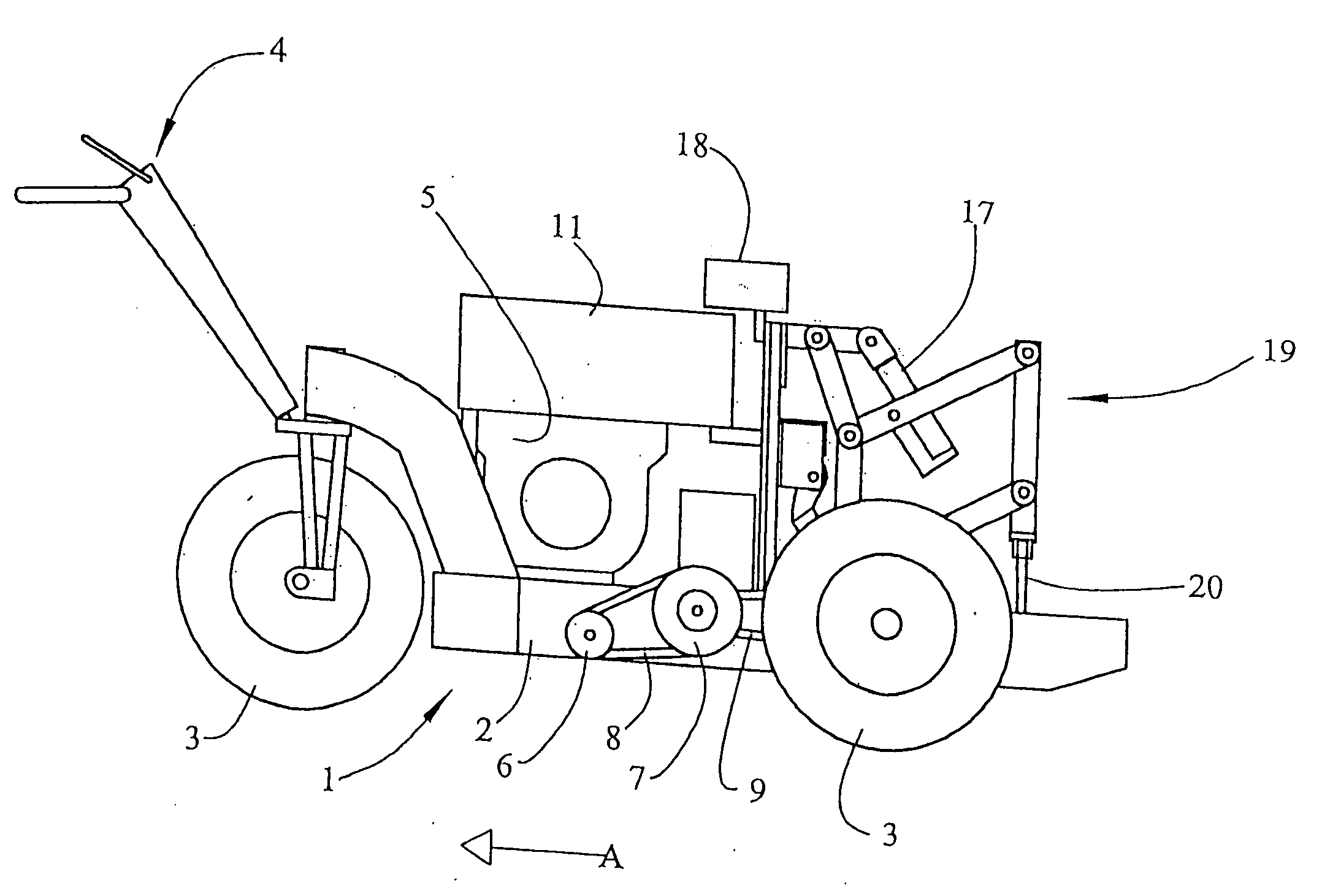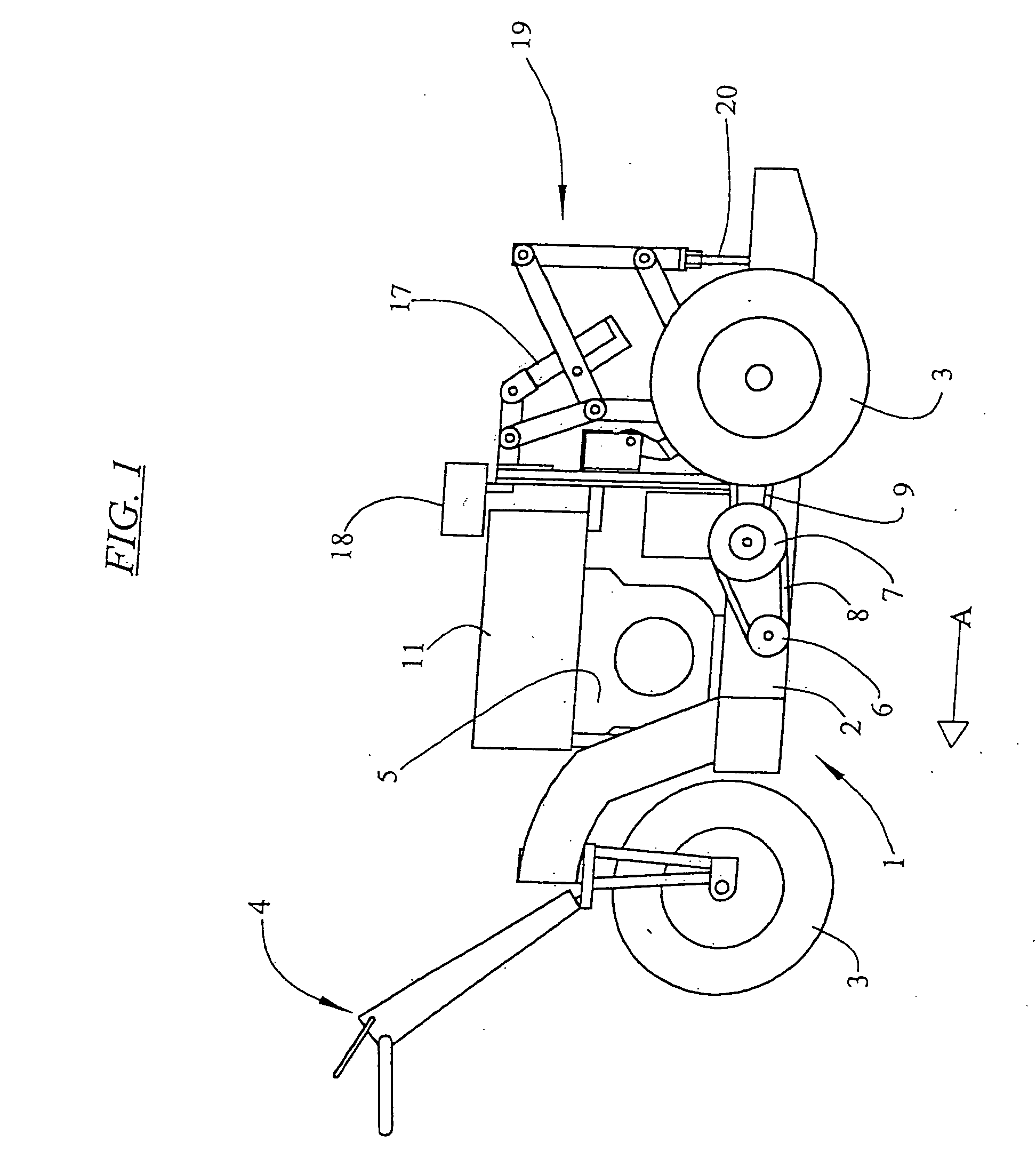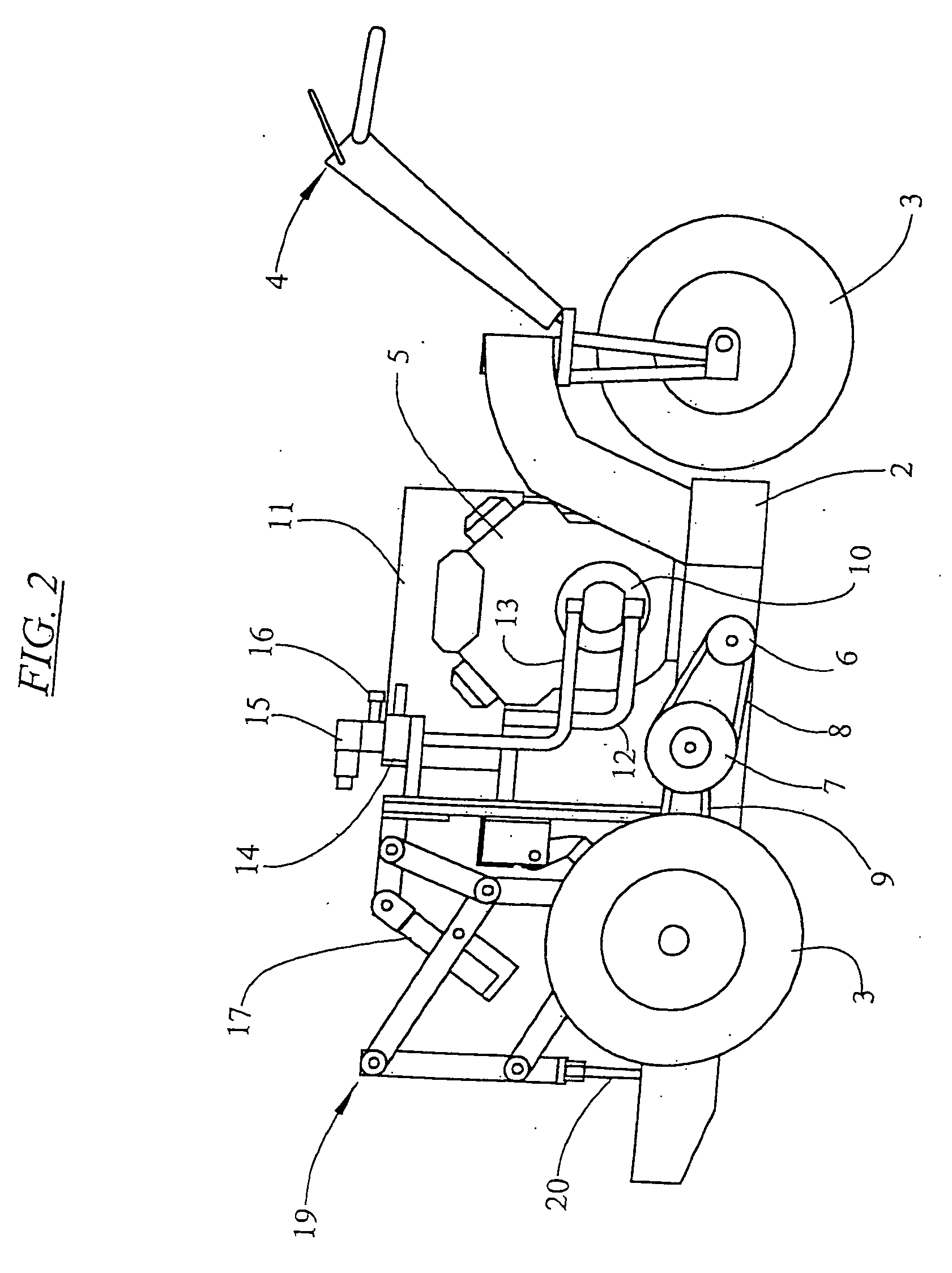Cultivating device
a technology for cultivators and ground surfaces, applied in lawn machines, applications, agriculture, etc., can solve problems such as significant affecting overall appearance, undesirable dimples in ground surfaces, and difficulty in synchronising the speed of hole making tools with the speed of prime mover
- Summary
- Abstract
- Description
- Claims
- Application Information
AI Technical Summary
Benefits of technology
Problems solved by technology
Method used
Image
Examples
second embodiment
[0072]FIG. 14 shows the present invention using a mechanical driver. The link arm assembly 19 of this embodiment is identical to that described in relation to FIGS. 1 to 13 and the description will not be repeated. The same reference numerals have been used to identify corresponding features.
[0073] The cultivator 60 of the second embodiment is designed for attachment to the three point linkage of a tractor (not shown). Support frame 2 is modified to include upper and lower three point linkage attachments 61, 62 of conventional type. The cultivator 60 is driven via an input shaft 63 that is coupled with the power take off of a tractor (not shown). Input shaft 63 drives a gearbox 64 which in turn drives a pulley 65. Pulley 65 drives a jack shaft pulley 66 via conventional V-belt 67. The jack shaft pulley 66 in turn drives a flywheel 68 using a conventional V-belt 69. The flywheel 68 is thus driven in rotation by the power take off of the tractor in a conventional manner. A connecting ...
third embodiment
[0074]FIGS. 15 and 16 illustrate a third embodiment cultivating device 100 having a revised dampening arrangement within a housing 130. In all other respects the cultivating device is the same as that shown and described in FIG. 14. Although the cultivating device 100 is illustrated as a mechanically driven cultivating device, the dampening arrangement can also be applied to other cultivating devices, such as the cultivating device shown and described in FIGS. 1 through 13.
[0075]FIGS. 15 and 16 illustrate the cultivating device in the same position as shown in FIGS. 6 and 14. The position illustrated is at top of stroke for the tool support 34 and tine 20. According to the dampening arrangement, the dampener 43, heretofore described in FIGS. 6 and 14, is replaced with a dampening block 143. The bias element 41 is replaced with a smaller vertical profile bias element 141 supported on a fixed block 142. The profile of the arm 25 on which the pedal 42 is mounted provides a cam surface ...
PUM
 Login to View More
Login to View More Abstract
Description
Claims
Application Information
 Login to View More
Login to View More - R&D
- Intellectual Property
- Life Sciences
- Materials
- Tech Scout
- Unparalleled Data Quality
- Higher Quality Content
- 60% Fewer Hallucinations
Browse by: Latest US Patents, China's latest patents, Technical Efficacy Thesaurus, Application Domain, Technology Topic, Popular Technical Reports.
© 2025 PatSnap. All rights reserved.Legal|Privacy policy|Modern Slavery Act Transparency Statement|Sitemap|About US| Contact US: help@patsnap.com



